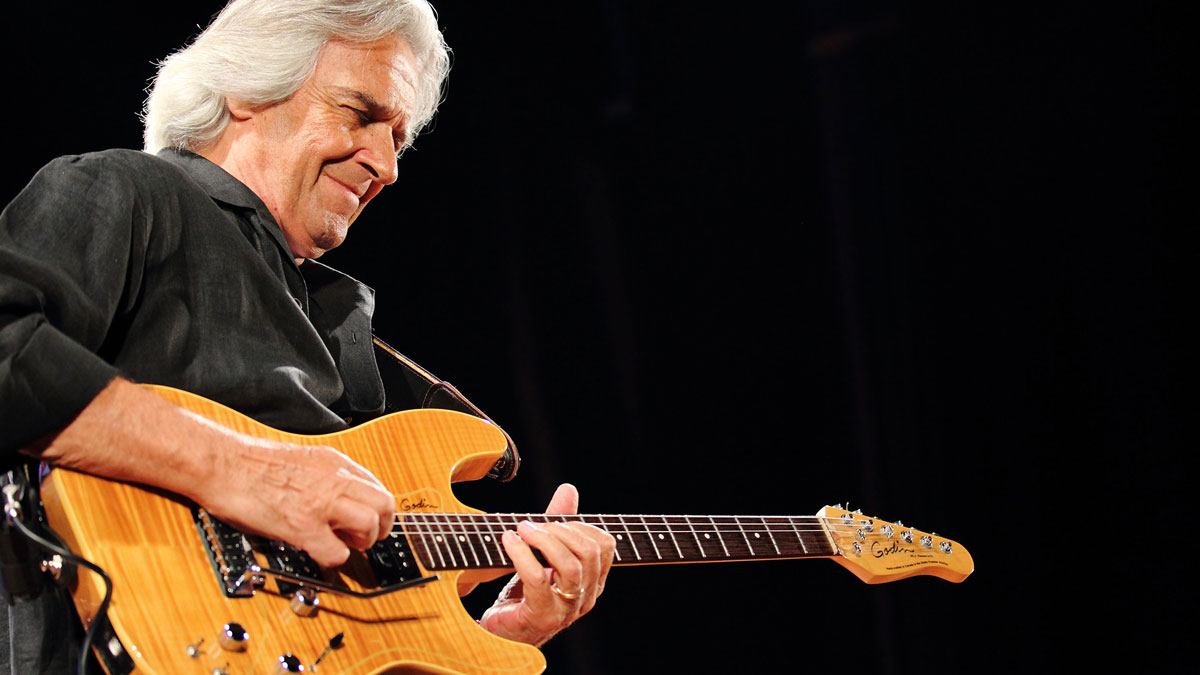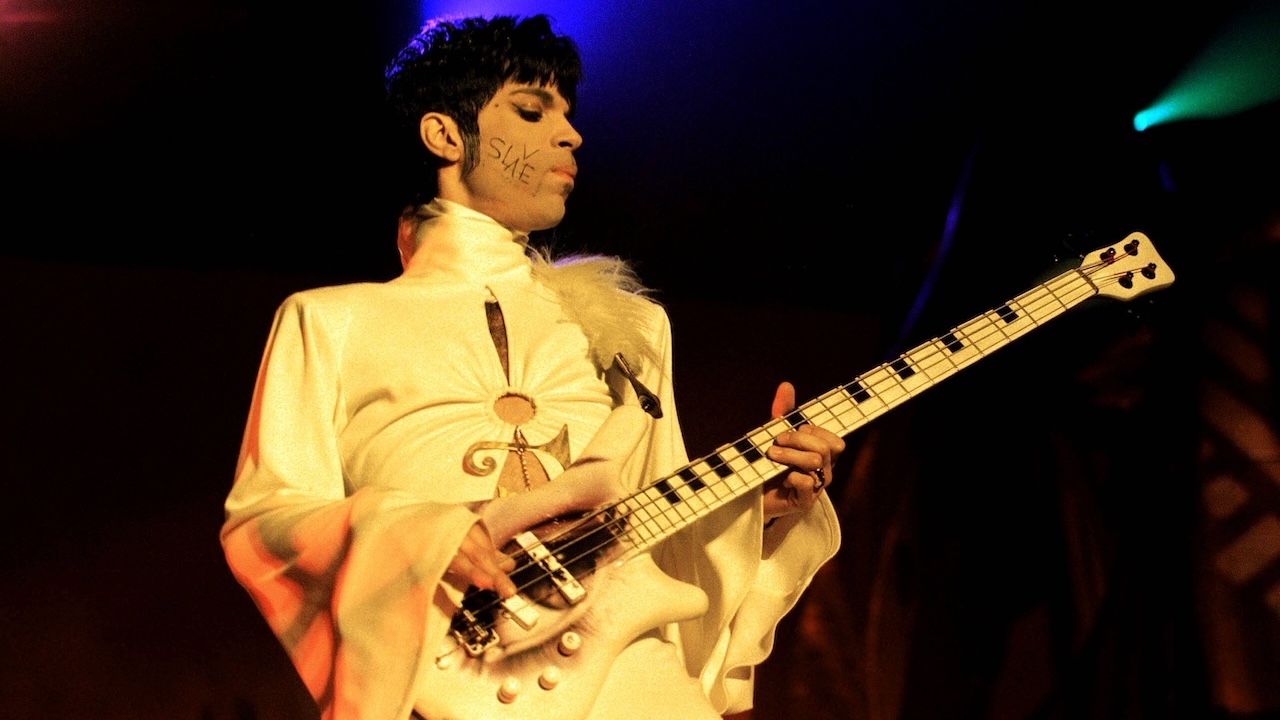The 100 greatest guitarists of all time
A comprehensive rundown of the best guitarists of all time, featuring the trailblazers, the early innovators, the best jazz, rock, indie, blues, metal and acoustic players – and the top guitarists around today...
The best jazz and fusion guitarists of all time

1. Django Reinhardt
Countless players of all styles have cited Django as an influence, from Wes Montgomery and Joe Pass to Stevie Ray Vaughan and Jeff Beck, though it’s among the Gypsy communities of Europe that Django truly lives on. Exactly how he managed, with a badly injured fretting-hand, to play such incredible lead lines is still the subject of debate.
Frankly, it’s mind-boggling - and his intensely swinging single-string solos, near impossible chromatic runs encompassing the entire range of the guitar neck, incredible arpeggio leaps across the fretboard and fearsome rhythmic drive have had musicians’ jaws on the floor ever since.
Mere hyperbole? Certainly not! Together with violinist Stéphane Grappelli, Django was instrumental in developing the vocabulary of the entire gypsy jazz genre.
Django almost exclusively used a 1930s Selmer-Maccaferri guitar, set up with light gauge ‘silk ’n’ steel’ strings (0.010-0.046) and featuring an internal sound chamber to enhance projection.
His own Selmer, serial number 503, is on display at the Museum Of Music in Paris. Only a few dozen other examples survive and today fetch astronomical sums!
2. Allan Holdsworth
Playing tips from the fusion genius who influenced the likes of Satriani and Zappa
The power of four…
Get The Pick Newsletter
All the latest guitar news, interviews, lessons, reviews, deals and more, direct to your inbox!
“When I practise scales I will play four notes on one string. If I’m playing a C major scale, starting on F, I’ll play the F, G, A, and B on one string and the C will be on the A string, and so on. Because I found not only was it good for my hands but it was really good for interconnecting things.
“I didn’t want to end up playing in positions like you’d see guys playing, and every time it was a different chord their hand would be in a completely different position, and I wanted to eliminate that completely.
“So I always practised playing scales in every position and I looked at four notes per string as a way of connecting positions together.”
Achieving pure legato...
“I never use pull-offs because I don’t like the sort of ‘meow’ sound they make with the string being deflected sideways. So I kind of tap the finger on and lift it directly off the string. I practise trying to make all the notes play the same volume or even some of the notes I’ve hammered, louder than the notes I’ve picked.
“So you can place an accent anywhere you normally would if you were using a pick. I’ve got better at it now and when I listen to it I can pick up what’s going on and I think it’s harder to tell now what’s picked and what isn’t. But basically I wanted to make a note I’d hammered louder than a note I’d picked.”
3. Wes Montgomery
Thumbs Up! Putting a finger on Montgomery’s amazing playing technique
The most significant part of Montgomery’s playing style was his preference for using his thumb instead of a pick. And it gives a tone far thicker and warmer than any plectrum can produce – though you’ll be sacrificing speed for tone.
Montgomery elaborated on this by explaining that it was quieter when practising at night; that he kept dropping picks, and felt that he was more ‘in touch’ with the guitar without one. Regardless, it’s amazing how agile Wes could be with the thumb.
Although he played mainly with a legato style – with lots of slides, hammer-ons and pull-offs – he was able to play upstrokes for fast, single-note lines as well as fast tremolo passages on octave and chord runs. He’d also execute swift arpeggio runs in a ‘sweeping’ style.
Some of this can be explained by the fact that he was double-jointed. Even so, it remains impressive that he was able to create a classic, distinctive tone with just a guitar, a lead, an amp and his thumb!
4. John McLaughlin

Back in 2016, the fusion pioneer talked gear with Guitarist. Here’s the lowdown on the tone
“I’m using three kinds of tube preamp, depending on what sort of mood I’m in. The old one is a Mesa/Boogie V Twin, which I really like because I used to play Mesa/Boogie amps back in the '70s and '80s. Then I have a [Hermida Audio] Zendrive2; this has one valve in it.
“The last one is a Seymour Duncan Twin Tube Classic and this album [2015’s Black Light] has been recorded with the Seymour Duncan from start to finish. I use a Line 6 wireless system [Relay G30], which is the best one I know.
“I go straight into the tuner and from the tuner into the preamp, whichever one I’m using, and from there it goes into an MXR [Carbon Copy] Delay – I really like MXR for quality – and from that into an MXR Stereo Chorus, and that’s it. Then the output goes to the monitors and to the front of house.”
5. Larry Carlton
The session ace and Steely Dan regular gives his tips for developing your musical ear
Learn jazz standards...
“For me, it started by learning standards. I remember that when I would learn a four-bar phrase from a Joe Pass record, I’d then go back and learn the chords that were happening underneath it, not just the solo. Then I had the opportunity to analyse it: why could he play those notes against that chord? I think it’s important that once you learn the solo, learn the chords, then think about why that could happen.”
Use simple clusters of notes...
“That’s the motif approach of making a small statement and then developing that statement. It always shows up in my solos. I haven’t abandoned it but I am not really aware of it. To me, that is just the musicality that comes out of me. Play something and wait a second. If nothing else comes, imitate what you just did. It is a patience thing.”
Also in the running…
Pat Metheny
Since deciding it was rude to copy Wes Montgomery, this giant has continually expanded jazz vocabulary in harmony and instrumentation.
George Benson
Watch Benson sing his guitar lines while he improvises: this is an outrageous musical ear and unfailing sense of melody.
Shawn Lane
He could play faster than anyone, but wisely remembered to include rhythm and tunes. Guthrie Govan and Paul Gilbert were awed.
Frank Gambale
Sweep-pickers the world over owe a debt to Gambale’s videos. His prolific output includes six albums with Chick Corea.
Current page: The best jazz and fusion guitarists of all time
Prev Page The best acoustic guitarists of all timeJonathan Horsley has been writing about guitars since 2005, playing them since 1990, and regularly contributes to publications including Guitar World, MusicRadar and Total Guitar. He uses Jazz III nylon picks, 10s during the week, 9s at the weekend, and shamefully still struggles with rhythm figure one of Van Halen’s Panama.
“Tom would say, ‘Play your guitar with a car key.’ It was very experimental”: Little Feat's Fred Tackett recalls Tom Waits' left-field approach to guitar playing – and his one-of-a-kind studio sessions
“Seeing friends and heroes of mine having their solos plagiarized broke my heart”: Giacomo Turra used their solos note-for-note for his own viral content. Now the guitarists who had their playing “stolen” are speaking out












